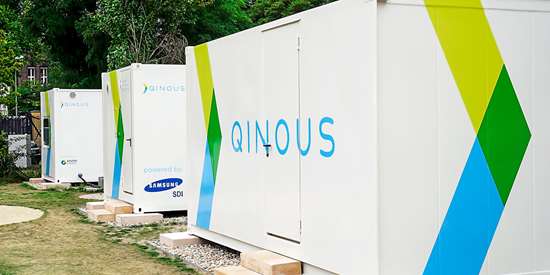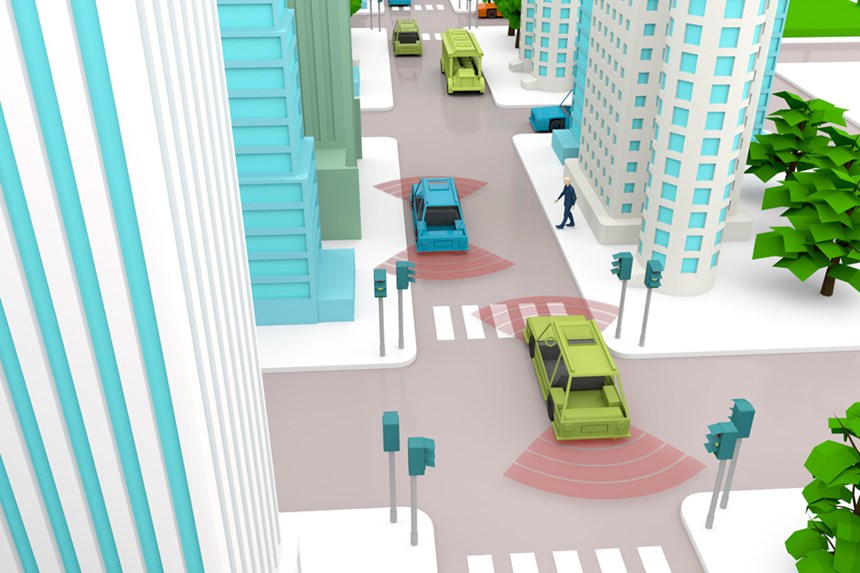Tech Watch: Dec. 2018
Amoral Machine or a Moral Machine?
Amoral Machine or a Moral Machine?
If one car is cut off by another, in a split second a swerving driver may be forced to decide whether to hit a child crossing the street or crash into an elderly couple waiting for a bus. If the vehicle is operated by a driverless operating system, then a computer has to respond to this version of “trolley problem” - a classic ethical conundrum familiar to many armchair philosophers.
An MIT survey quizzed over 2-million online participants from over 200 countries on how they would react to several different scenarios, each offering one of two fatal choices. The MIT Media Lab conducted the study to assess the moral questions we soon will be asking of our autonomous vehicles. Researchers placed participants into multilingual online game, dubbed the “Moral Machine,” where they weighed whether they would prefer to spare the lives of lawful bystanders versus jaywalkers, or elderly pedestrians versus young pedestrians - if forced.
The vast majority of opted to save the lives of humans over those of animals; aiming to spare the lives of more people rather than fewer; and avoiding injuring young people over old. Incidentally, most chose innocent bystanders versus jaywalkers when put to the test. However, there were a few cultural pulls against the majority, with some Asian respondents reporting “a less pronounced tendency” to favor younger people, rather than the elderly, according to the survey.
A key purpose of the study was to engage more public discussion around autonomous vehicle technology, researchers said.
"On the one hand, we wanted to provide a simple way for the public to engage in an important societal discussion," said Iyad Rahwan, an associate professor of media arts and sciences at the Media Lab and co-author on the study. "On the other hand, we wanted to collect data to identify which factors people think are important for autonomous cars to use in resolving ethical tradeoffs."
The paper, "The Moral Machine Experiment," is being published in Nature.
Caption:
122018ADP-TechWatch1.jpg
In an effort to generate discussion on how autonomous vehicles should be programmed, MIT quizzed over 2 million online participants on how they would react to several different driving conundrums, with each scenario offering one of two fatal choices. (Image courtesy of MIT)
The Power of Coasting
Imagine a world without traffic lights - even in densely packed cities. Andreas Malikopoulos, a professor of mechanical engineering at the University of Delaware, imagined such a landscape, and recently revealed pair of simulated solutions to help cars avoid colliding at intersections, while saving fuel in the process.
Malikopoulos and collaborators from Boston University developed a solution to control and minimize energy consumption in connected and automated vehicles crossing an urban intersection that lacked traffic signals. Using simulation software, the researchers found their framework allowed connected and automated vehicles to conserve both momentum and fuel, while also improving travel time. The results were published in the journal Automatica.
Working with other researchers from the University of Virginia, Malikopoulos developed another solution that optimizes acceleration and deceleration along roadways where speed limits decline. The idea is when speed limits fall from, say, 65 mph to 45 mph, the vehicle would automatically slowdown in response, helping to avoid crashes. That same “optimal deceleration” means connected vehicles use 19 to 22 percent less fuel and get to their destinations 26 to 30 percent faster than human-driven vehicles, according to simulations. The results of this research effort were published in IEEE Transactions on Intelligent Transportation Systems.
"We are developing solutions that could enable the future of energy efficient mobility systems," said Malikopoulos. "We hope that our technologies will help people reach their destinations more quickly and safely while conserving fuel at the same time."
Rolls Readies Cleaner Off-Grid Energy
Rolls-Royce is looking to boost its clean energy portfolio, likely with an eye toward an electric vehicle future by taking a stake in Berlin-based energy storage and systems start-up Qinous (www.qinous.de).
Rolls-Royce notes that as a strategic investor in Qinous, the goal is to develop innovative energy storage solutions and together offer cleaner energy hub solutions, presumably with EVs in mind. Microgrids and the big backup batteries to run them might conjure up the idea of renewable energy havens. However, most of the world’s microgrids are still powered up by old-timey diesel, and Rolls Royce is one of the largest producers of gas and diesel generators, with a well-established distribution network through its brand MTU Onsite Energy systems.
“We have identified our customers’ needs in terms of autonomous energy supply systems that are efficient, reliable and environmentally friendly. For this reason, we are now adding turnkey microgrids to our current portfolio,” said Andreas Schell, CEO of Rolls-Royce Power Systems.
Schell, who has been in his present job just under two years, previously worked at Fiat Chrysler Automobiles (FCA) , where he held a number of positions including vice president of Electrical and Electronics Core Engineering, and was responsible for developing and releasing electric systems for the Chrysler, Jeep and Dodge product lines. He was also responsible for hybrid development, fuel cell systems and advanced vehicle engineering at the former DaimlerChrysler.
Qinous says it has integrated battery storage and energy systems in microgrids in more than 30 projects worldwide, including some involving MTU Onsite Energy systems from Rolls-Royce. The investment made by Rolls-Royce will expand the existing product portfolio, and strengthen global sales and marketing.
Caption:
122018ADP-TechWatch2.jpg
Berlin-based energy storage and systems start-up Qinous, makes big batteries like these. Rolls-Royce just took a stake in the company as it eyes an electric vehicle future.
What Alibaba Sees in LiDAR
China’s largest e-commerce company, its largest publicly traded carmaker and the holding firm for one of its largest electric vehicle companies have completed a combined $45 million investment into LiDAR firm RoboSense (www.robosense.ai).
Cainiao Smart Logistics Network Ltd., part of Alibaba Group; SAIC Motor Group (Shanghai Automotive Industry Corporation), the largest publicly-traded auto manufacturer; and BAIC Group (Beijing Automotive Industry Holding Co.) electric vehicle company, were all in on the round. RoboSense plans to use the funding to boost market share and R&D for autonomous vehicle technologies - including its solid-state LiDAR, AI sensing algorithms, and accelerating overall product development.
The company is mass producing 16-beam automotive LiDAR, its 32-beam LiDAR, and recently released a LiDAR-based autonomous driving environmental sensing AI system.
Alibaba’s Cainiao Network isn’t a passive money backer. Earlier this year, it worked with RoboSense to unveiled the G Plus, which they said is the first solid-state LiDAR unmanned logistics vehicle. RoboSense developed a MEMS (microelectromechanical system) as part of the LiDAR.



